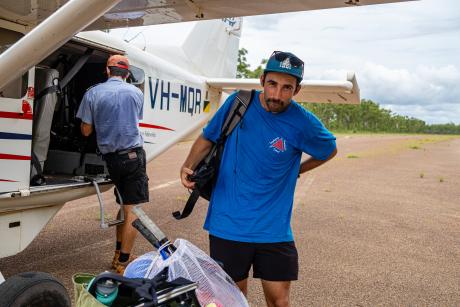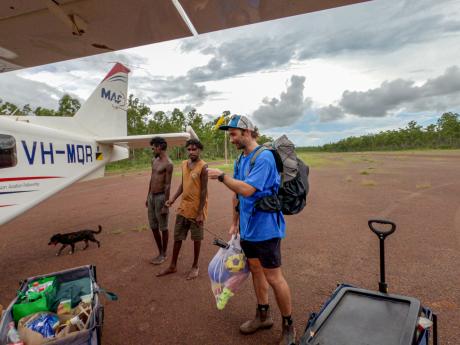
The Laynhapuy Homelands School’s education program allows students and their families to live on Country without losing out on education.
Nathan Roberts, a primary school teacher at Laynhapuy Homelands School, works under often challenging conditions at several remote schools across East Arnhem Land.
“As a visiting teacher, I fly out to remote homeland communities in East Arnhem Land where I deliver an education service to Yolŋu kids aged 5-15 in their homelands,” Nathan said. “We stay in each homeland 3 to 4 days at a time, living in the homelands in a variety of accommodation types, from swags to basic visitor centres.”

Due to the remote locations of schools, Nathan said his role often requires a lot of adaptability, initiative and problem-solving skills.
“Things never really work out the way you thought they might, and being hundreds of kilometres away from town, you learn to become resourceful.”
Teaching in these contexts would not be possible without charter aircraft.
Having teachers fly out weekly allows primary school students to stay at home with family, all while gaining an education on Country.
“We work collaboratively alongside Homeland Centre Teachers to support students to walk in both ways of life, with a strong Yolŋu identity and strong understanding of English and Western culture,” said Nathan.

Many Laynha homelands are a long way from the closest services or larger communities, and the wet season isolates them even further.
“It can be hard for people from other parts of Australia to understand how remote and inaccessible so many of these areas are and how heavily they’re affected by weather events and seasonal changes,” said Nathan.
This is where aviation makes a significant difference to whole communities, whether through transporting community members or service providers or goods.

“In all homeland communities, there are frequent road closures, food security issues, power issues and limited access to essential services,” Nathan said. “Teaching in these contexts would not be possible without charter aircraft.”
“So, I'm working alongside MAF and the Laynhapuy Homelands School. Just being able to provide these services is really uplifting. It’d have to be one of the most unique schools to operate in the world.”

For MAF pilots like Chris Coffee, “school bus” flights are part of the weekly routine in Arnhem Land, but the big picture is always the connections and opportunities enabled by aviation.
“We fly primary school teachers out to the homelands,” Chris said. “It’s so encouraging to know that we play a part in connecting the kids in these really remote homelands with access to great passionate teachers who really care about the kids and the communities they're in.”